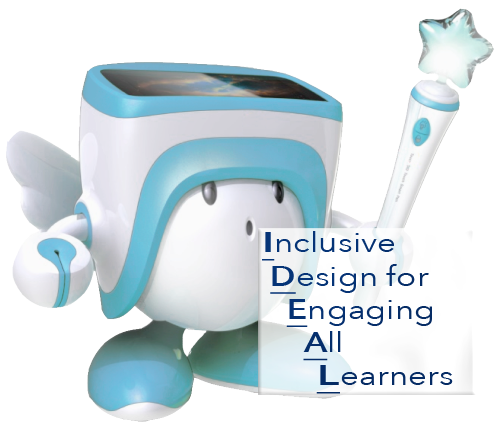Children Learn to Connect through Translating Robots

Can a robot help children from different cultures learn together?
Dr. Yanghee Kim, an associate professor of instructional technology and learning sciences at Utah State University, is attempting to find out. With the help of a three-year grant from the National Science Foundation, Dr. Kim and her team of researchers will study how groups of young children interact with an educational robot.
The study builds on a previous research project conducted by Dr. Kim in which a robot, run via smartphone app, encouraged children to learn English through a series of games and activities.
The original robot was designed to work with children one-on-one, but during that research project Dr. Kim noticed that children were inviting others to participate with them.
“We didn’t have to teach them to take turns,” Dr. Kim said. “They invited their friends and then they naturally took turns, while other children were pointing and helping.”
This upcoming research project is designed to teach other academic skills beyond the English language. In addition, it can work as a “cultural broker,” Dr. Kim said. “Facing and managing diversity is a worldwide educational problem. Can we use this robot to mediate collaboration between people from different backgrounds?”
Because of the robot’s translation abilities, children who speak different languages can use the robot together. Children who aren’t proficient in English struggle in modern American classrooms, and research has shown that early difficulties often persist throughout a child’s educational career.
“If you don’t have a good command of English skills, there is no way to avoid falling behind in this academic journey,” Dr. Kim said. “Teaching academic skills is important, but the more important thing in early school years is building their potential, building their confidence, and building their positive identity.”
The hope is that allowing children of various backgrounds to work together will ultimately build bridges between cultures. “It’s not just a learning tool; it creates a social plaza,” Dr. Kim said. “The goal of this project is that two students can build positive identities and a respectful relationship.”
That can have an impact far outside the four walls of a classroom.
“We gather with birds of the same feather. Not because we are racist, but because it’s comfortable. We are not trained to work with people who have different perspectives and different cultural references,” Dr. Kim said. “We are different, but we can still work together.”

